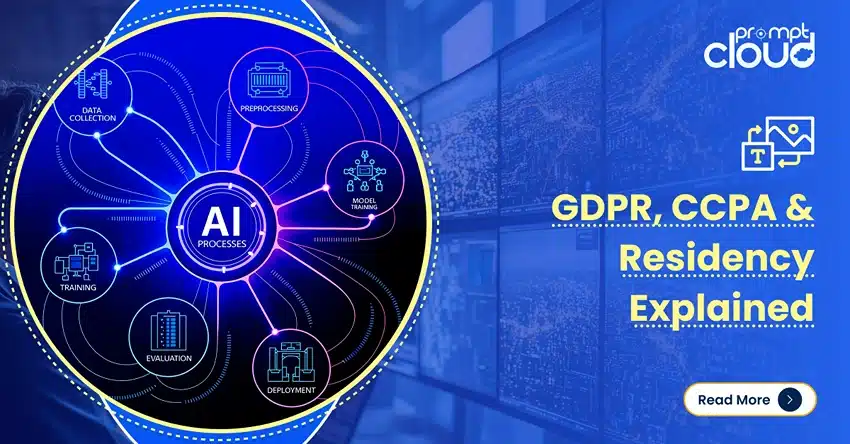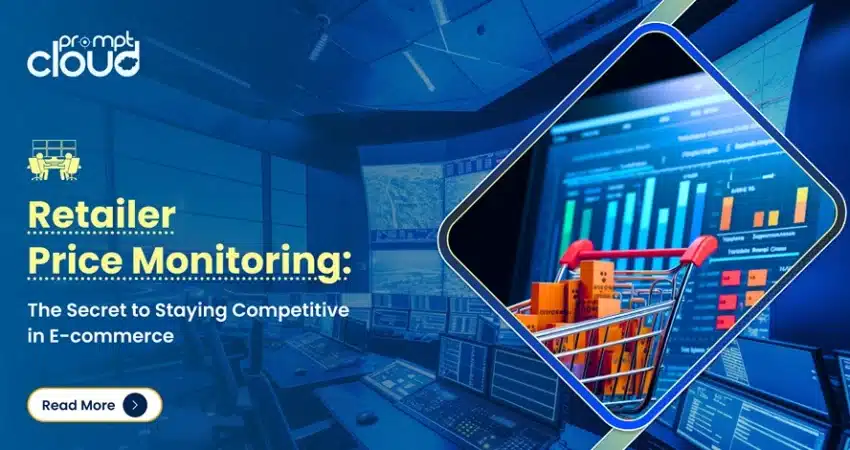
E-commerce is more competitive than ever. With a few clicks, shoppers can compare prices across various retailers, and a marginal difference could be enough to lose customers to a competitor. To online retailers, keeping up with altering prices feels like chasing a shifting aim. This is where an ecommerce price monitoring tool becomes beneficial.
A McKinsey study found that dynamic pricing strategies can boost revenue by 2-5% and increase margins by 5-10%. However, if you are still manually tracking prices, you are already behind. By the time you identify shifts in pricing, the competition is already snatching your sales. This article aims to modify the competition with automated price monitoring, explaining what it is and why it is considered a tool that can change the odds.
What is Ecommerce Price Monitoring?
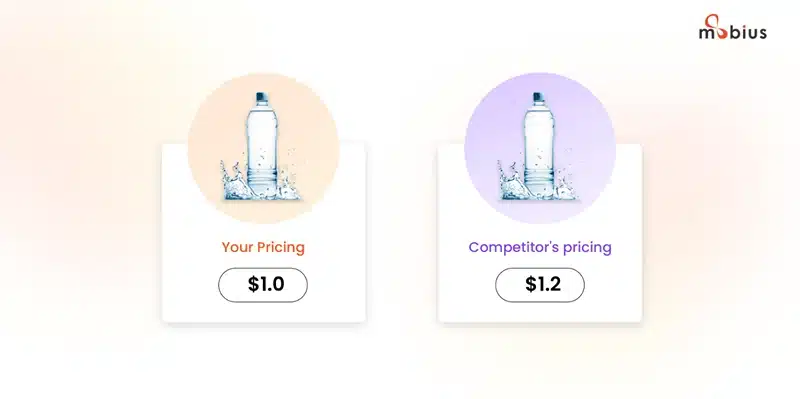
Image Source: Mobius
As the name indicates, ecommerce price monitoring entails tracking the prices of products from different online retailers and analyzing pricing trends. Having access to price mobility allows businesses to make informed decisions on pricing, effectively manage competition, and prevent revenue loss from overpricing or under-pricing.
Let’s say you’re selling sneakers over the internet. If a competing company lowers their price by ten percent, you need to know immediately otherwise customers will likely lean towards the better offer. With a price monitor you get real-time updates which allow you to alter the pricing strategy without needing to refresh the competitor’s website.
Modern price tracking tools use automation and AI to do the strenuous work of collecting and analyzing pricing data while you come up with creative strategies to take center stage in the market.
Why Do Retailers Need Ecommerce Price Monitoring?
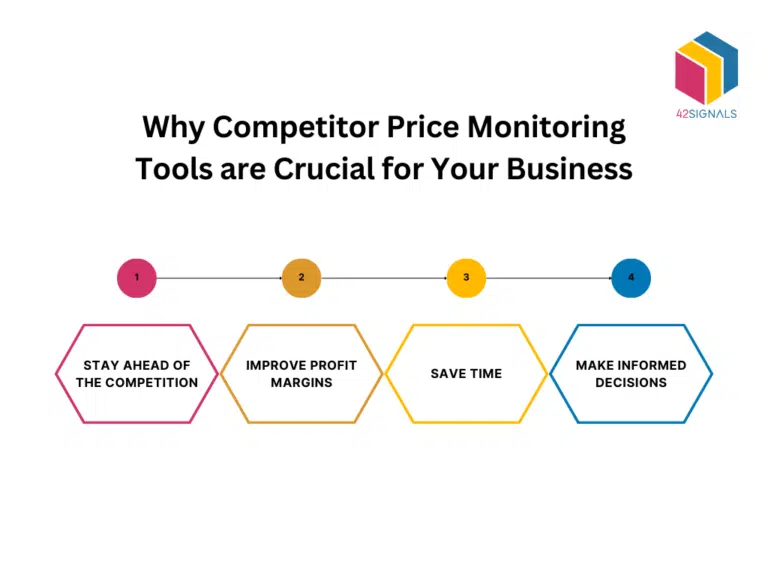
Image Source: 42Signals
If you’re an ecommerce personnel, you would know that in the e-commerce world, everything is constantly changing. Not being aware of competitors’ pricing strategies puts you at major risk. Here are some of the things you might miss out on:
1. Stay Competitive
Customers are savvier than ever, using price comparison tools to find the best deals. This puts your business at great risk. Lower prices from your competitors mean you automatically lose sales. This is why every business needs proper price monitoring tools today. Remain focused and utilize your time properly while taking care of your profit margins.
2. Maximize Profit Margins
Setting an optimal price has never been this easy. With price monitoring tools, you can now analyze set prices strategically without much hassle and inflict absolute minimum negative profit.
3. React to Market Trends
Prices are not random. Holidays and competitors’ campaigns create price movement.
- Prices change because of vacation sales.
- Competitor advertisement has the power to shift the market.
- Pricing changes due to supply chain issues.
Catch-up is never fun – with an ecommerce price monitoring tool, you can adapt to the market before being forced to react.
4. Protect Your Brand Reputation
Customer perception is crucial. Gaining revenue while losing customers’ faith is uncontrolled brand management. Unauthorized sellers dropping your products at lower-than-considered prices do damage to your brand. Why would customers trust you when your official store displays higher prices?
Maintaining effortless price consistency can prevent hindrances to your brand image.
5. Save Time & Reduce Manual Effort
Tracking prices manually? That’s a one-way ticket to burnout. Focus on strategically important business decisions while automated data monitoring tools analyze and track your prices.
What is an Ecommerce Price Monitoring Tool?
Any software that tracks, analyzes, and evaluates pricing changes across multiple online stores, marketplaces, and DTC websites is an ecommerce price monitoring tool. Such a tool enables the user to receive alerts of the aforementioned price changes.
Here’s what it does:
- Collects Data: Competitor price evaluation, including discounts and stock availability.
- Analyzes Trends: Detects price patterns and competitor strategies.
- Provides Alerts: Tells you when the price goes down, up, or what’s available in the market.
- Recommends Adjustments: Terminally advises on how to price things according to the market.
With this data, you can make informed pricing decisions—without the guesswork.
Who Should Be Using an Ecommerce Price Monitoring Tool?
A price monitoring tool is not only for large retailers. All businesses, small or big, can make use of price monitoring. This is who it is useful for:
- E-commerce Managers: Owners of online stores are required to keep track of price changes in order to stay in the competition. Price monitoring tools provide vital information to improve pricing and boost revenue.
- Pricing Analysts: Pricing teams rely on substantial data in their decision-making. A competitor tracking tool provides sufficient intelligence that is crucial in changing prices to more profitable levels.
- Category Managers: Covering a wide array of products means that one has to increase or decrease prices based on demand and competition. This is how a price tracker saves a category manager.
- DTC Brand Strategists: These brands are not only required to keep an eye on prices from their competitors but also from third-party sellers who may sell at bargain prices. Price monitoring tools assist in ensuring price uniformity from everywhere.
Whether you are a small online store or a large marketplace seller, an ecommerce price monitoring tool is a must-have for sustainable growth.
How Does a Price Monitoring Tool Help Retailers?
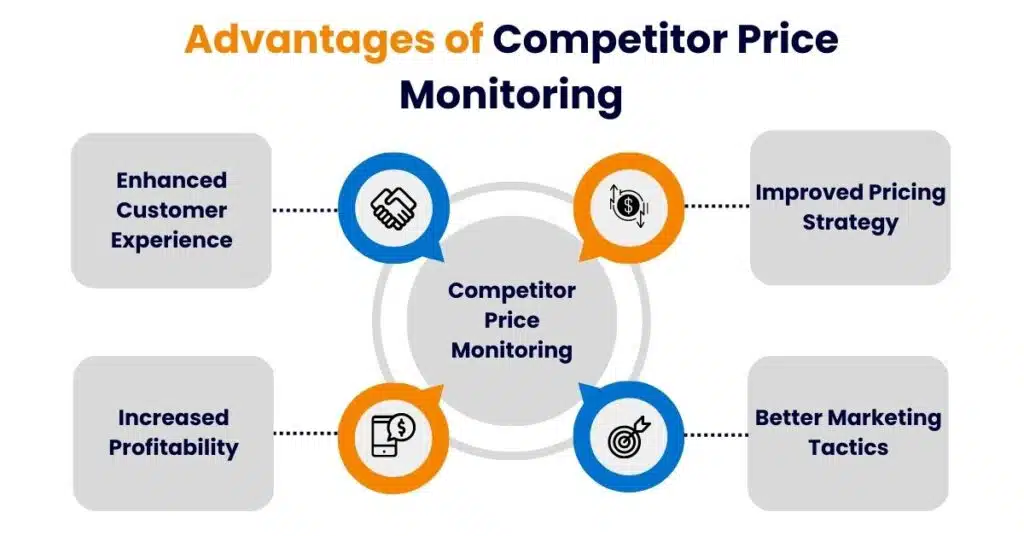
Image Source: web data guru
An ecommerce price monitoring tool doesn’t only revolve around numbers that need to be tracked—the main focus here is sales and profit! Here’s how:
1. Real-Time Competitive Pricing
Using a checking tool enables you to receive live updates about prices, eliminating the need for checking competitors’ web pages manually, which is much easier. This guarantees that you are always selling at a competitive price, improving your chances of claiming the Buy Box on Amazon and other marketplaces.
2. Automated Price Adjustments
Changes in prices can take a lot of time, especially if done manually. You can automate certain pricing strategies with advanced tools, such as:
- “Match the lowest price among the top three competitors.”
- “Increase price by 5% when demand is high.”
- “Lower price by 2% if a competitor drops theirs by more than 10%.”
This technique enables you to stay competitive without micromanagement since all the work is automated.
3. Identify Market Trends
Competitors usually act in a particular fashion, and with the right historical data analysis from price monitoring tools, you are able to predict some of their behavior. If a competitor tends to bottom out prices before Black Friday every year, you’ll know exactly what to prepare for and plan on how to execute your pricing strategy ahead of time instead of dealing with the aftermath.
4. Avoid Price Wars
Competing for the cheapest price can lead to a downward spiral. Rather, using monitoring tools allows for strategically managed pricing alongside product differentiation and effective marketing responses.
5. Prevent Unauthorized Price Changes
If third-party resellers are selling your products below your agreed-upon price, it can hurt your brand. Price monitoring tools help detect:
- MAP (Minimum Advertised Price) violations
- Unauthorized sellers
- Grey market activities
This allows uninterrupted selling while guarding the price of the product.
What Are the Best Price Monitoring Tools for E-commerce Websites?
Choosing the right tool depends on the specific needs, budget, and features. Some of the most useful tools are the following:
1. 42Signals – A PromptCloud Product
42Signals offers AI-driven price tracking and competitor monitoring tools, providing accurate and real-time pricing insights. It allows businesses to monitor competitors, analyze price trends, and optimize pricing strategies. As a part of PromptCloud, 42Signals ensures high-quality data along with custom dashboards tailored to e-commerce needs.

Image Source: 42Signals
2. Prisync
Prisync is a popular choice for monitoring dynamic changes made by competitors. The tool comes with alerts of price changes which helps give retailers an edge in remaining competitive, along with analysis of historical data.
3. Price2Spy
This tool is perfect for companies that require extensive monitoring and comparison of prices. It enables automation with swift responses to price changes.
4. Competera
Competera is useful for large retailers and brands because it incorporates machine learning to assist with strategic price optimization.
Each of these tools offers unique features, but 42Signals stands out as the best price monitoring tool for e-commerce websites due to its accuracy, customization, and scalability.
How PromptCloud Delivers Accurate Pricing Data for E-commerce Success
Having the right data is essential for any price monitoring strategy, and that’s why PromptCloud excels. The industry’s top web scraping service, PromptCloud offers:
- Custom Data Extraction: Tailored price data collection from any online source.
- Scalability: Monitors thousands of products across platforms.
- Real-Time Updates: Ensures fresh data for instant pricing decisions.
With dependable pricing intelligence, you can significantly increase revenue and grow your e-commerce business while making smarter competitor moves.Explore how PromptCloud can give you the edge today- contact us at sales@promptcloud.com!














